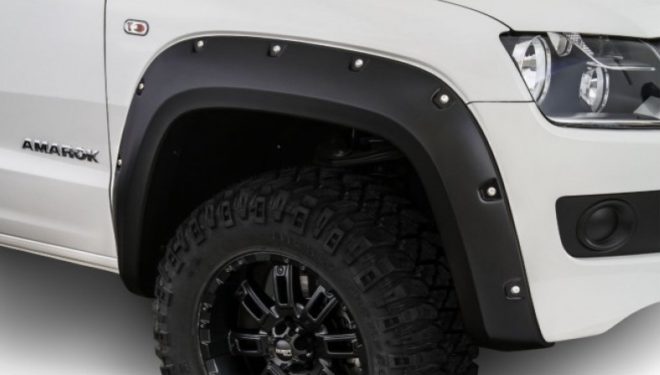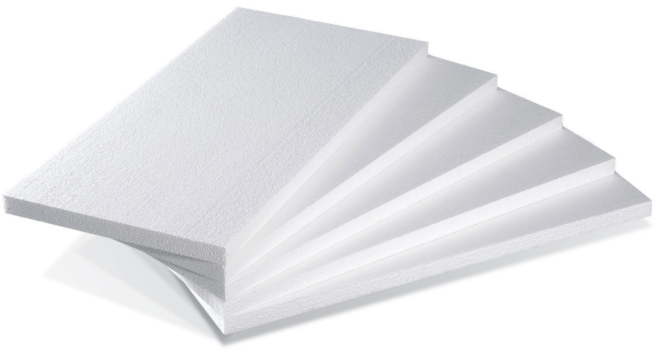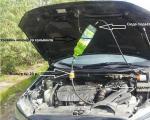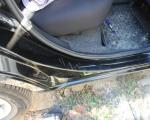How to make dilators for wheel arches with your own hands?
Recently, on the roads there are more and more cars on which wheel arch extensions (fenders) are installed. And the opinion of those who consider such details to be a tuning element that performs only aesthetic functions is erroneous.
In fact, in addition to improving the appearance of the vehicle, such expanders protect the body from pebbles flying from under the wheels, dust and dirt, especially if wide-profile tires are installed on the wheels.
Varieties of fenders
- universal. These are rubber pads sold in rolls. The use of such parts has no restrictions on the make or model of the vehicle - when installed, they can be easily adjusted to any arches. But despite the excellent protective properties, universal arch extensions do not have an exquisite design and significantly worsen the appearance of the car, so owners of SUVs most often purchase them;
- plastic. They are attractive, but are made for a specific model. Fixation on the body is carried out using self-tapping screws. A significant disadvantage of plastic wheel arch extensions is the low level of protection and fragility, so they are most often used for beauty;
- fiberglass. Sufficiently durable pads, outwardly resemble plastic. Most often they are made by hand or made to order;
- fiberglass. They are characterized by excellent appearance, as well as good protective qualities. They are quite expensive. In addition, the installation of these elements is a laborious and complex process. To install such a wheel arch extension, you must first clean its surface, apply a layer of putty. After that, the lining is equal to the car body, fixed with screws and painted with the appropriate shade of paint.
Popular manufacturers
To date, many domestic and foreign companies are engaged in the production of expanders for car wheel arches. Best proven:
- Bushwacker is an American company with many years of experience producing a variety of accessories for various models of SUVs and pickups. The production uses high-quality materials that are resistant to ultraviolet radiation, low temperatures, as well as resisting the destructive effects of acids and salts that are contained in mud or natural waters.
- GFG is a Spanish company known not only for its accessories for vehicles, but also for the production of special additives that make the car more economical, and the fuel materials used by the car owner are more environmentally friendly.
- Cezar is a Polish company producing high-strength plastic tape materials.
- Master-sport and Russian Artel are Russian companies that are equally successful in manufacturing wheel arch extensions for domestically produced cars - Zhiguli, UAZ, Lada Niva.

How to make a fender with your own hands?
The wheel arch extension on a car can be made independently from different materials:
- Expanded polystyrene (polystyrene). It is an excellent material for expanding arches on a car, featuring the following advantages:
- ease;
- high compressive strength;
- non-hygroscopicity;
- pliability to machining;
- affordable cost.

Styrofoam wheel arch extensions are made as follows:
- pieces of expanded polystyrene are glued to the car body using special glue (it is best to use Macroflex);
- after the glue has completely dried, using an electric knife and sandpaper, it is adjusted to the desired size and shape;
- to increase the strength, a layer of resin is applied to the foam, after which fiberglass is applied. In this case, it is necessary to carefully monitor that air bubbles do not form;
- after the previous layers have dried, putty is applied to the manufactured part, which, after drying, is necessarily subjected to a grinding process in order to smooth out irregularities, as well as to ensure a smooth transition of the expander into the car body;
- the surface is treated with a primer;
- at the end, the structure is painted with a paintwork material matched to the tone of the car body.
- Sculptural clay. For the production of expanders, you can also use special plasticine. Process steps:
- the working surface of the body is closed with mounting tape;
- soften the plasticine and spread the wings with it - first you need to rub small portions into adhesive tape until a thin uniform layer is obtained, and then, in large pieces, the required shape is created;
- then it is necessary to achieve symmetry between the wheel arches - experienced motorists say that this is the most painstaking part of the work;
- apply layers of resin and fiberglass (there must be at least three layers);
- after drying, the structure is removed from the body along with sculptural plasticine, the inner surface of the fender is cleaned of plastic mass;
- attach the part to the body with sealant and self-tapping screws;
- putty, sanding and applying a paint layer.
- Mounting foam. The manufacture of car wheel arch extensions from polyurethane foam - a cheap and very durable material - is becoming increasingly popular. Foam wheel arch extensions do this:
- they take a plastic arch as a basis - it is cut into pieces and fixed on the body with self-tapping screws;
- foam is applied outside and inside the arch;
- after complete hardening, armed with sandpaper and a clerical knife, the future wheel expanders are cut and given the necessary shape;
- the structure is sealed with resin and fiberglass (at least 2 layers must be applied);
- finishing processes - grinding, priming, etc.
Buying ready-made wheel arch extensions, or making them yourself is a personal matter for every car owner. The main thing is that the end justifies the means, and the new element qualitatively performs the expected functions.




